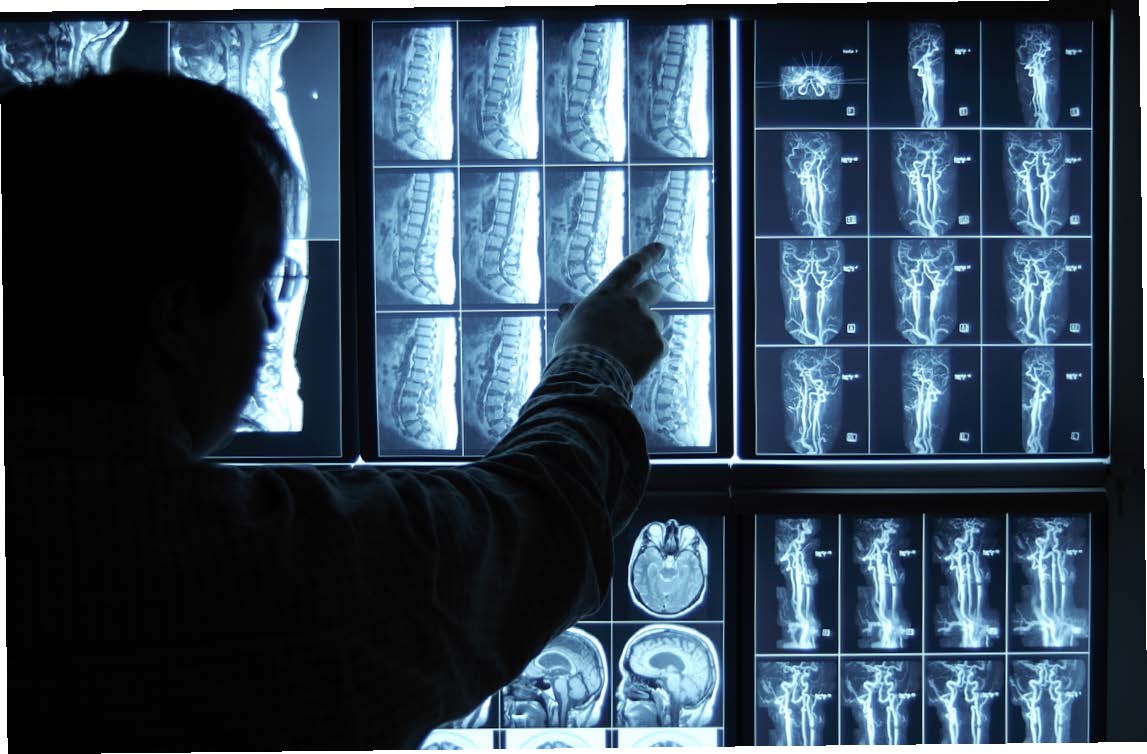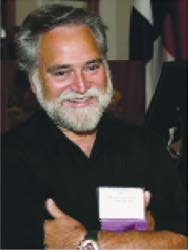ANCORA IMPARO
RICK RADER, MD ■ EDITOR-IN-CHIEF

On Being Able to See Right Through You
A study demonstrated that radiologists who read images, X-rays, MRIs and CT scans did a better job if they saw a picture of the face of the patient. The radiologists in the study said they read CT scans more meticulously and felt more empathy when they saw a patient's face.
The report of one of the several X-rays that were ordered over the weekend came back and landed on my desk.
"Hands and wrists, two views of the right and left hand and wrist were obtained. There is generalized osteopenia. There are OA changes seen at the first CMC joint with subchondral sclerosis and joint space narrowing. Ulnar styloids appear intact. There is no chondrocalcinosis. There are some degenerative changes seen at the carpus but without any obvious erosive changes. There are no erosions seen at any of the MCP or PIP joints. There are scattered areas of joint space narrowing at the PIP and DIP joints." To the layperson it might as well been written in ancient Egyptian hieroglyphics. But to the radiologist, the doctor who "read" the X-ray, it was sheer poetry. It explained exactly what was going on with these two hands and wrists. What was observed, what was normal, and what was out of whack. To the primary care physician, it provided a guide to assisting in what might have been the problem and what was needed to address the problem.
I know that this was just one of perhaps hundreds of X-rays that the radiologist studied and reported on in the previous week. And while the X-ray revealed much of everything, the radiologist needed to know to provide the report there was something missing; something that the radiograph did not reveal, announce or describe.
While the patient referral did indicate that there was a three-week history of wrist pain, nothing about the patient, nothing "really" about the patient was revealed by either the referral-slip or the X-ray.
The radiologist never actually saw the patient, talked to the patient, or understood the patient. In the world of radiology, it probably didn't matter. Radiologists do not treat patients, they simply describe parts of them. They are almost like the bombardiers in World War II. They put the "target" in their cross hairs, identify them (factory, airfield, railroad lines, bridges) and then watch and describe what's left after •the bombs were released. In this metaphor, the bombs are the trauma, the disorders or the disease.
Had the radiologist faced the patient, touched the patient, or found themselves in the same room with the patient, he or she would have understood that the wrist pain was not allowing the 44-year-old Special Olympic athlete to enjoy his favorite sport of bocce ball. How the pain had kept him from practicing Saturday afternoons with his Special Olympic buddies. How the wrist pain kept him from issuing a meaningful "high five" to his friends. But with no face, no soul, no expressions, there was simply a part that needed to be compared and described.
There was a study that demonstrated that radiologists who read images, X-rays, MRIs and CT scans did a better job if they saw a picture of the face of the patient. The radiologists in the study said they read CT scans more meticulously and felt more empathy when they saw a patient's face, although it's not clear whether the photo actually improved their accuracy in interpreting the test results.
Dr. Yehonatan Turner, an Israeli radiologist, came up with the idea as a result of being a frustrated radiology resident. He realized that without ever meeting the patient he knew more about the patient's liver and spleen than he knew about the patient. Turner shared that he was influenced by the twentieth-century philosopher Emmanuel Levinas' idea that seeing another person's face instills a series of responsibility for that person.
In the study, it was found out that the scans that included photos of the patients had more incidental findings provided by the examiner than the scans without the photos. So the conclusion was that if you saw (and felt you "knew") the patient, you might be more motivated to do a more comprehensive assessment. The radiologists reported that being able to have a look at the patients, it made them feel more like "physicians" than technicians. This approach could have some positive impact on both radiologists and pathologists, who also never see their patients but simply their "specimens".
This study could have similar positivity to others who "assess" people with disabilities without ever actually "seeing" them. People like those in school boards or employ ment departments, policy makers, insurance agents, biostatisticians, city planners, admissions officials, housing authorities and public officials. These groups often make decisions about people without seeing people. You don't have to be a radiologist to be able to see right through them. Perhaps they should read the observations of Levinas (with or without seeing a picture of him) to better understand his teachings: "Among all the organs of the body, the face is the one which stays most naked…In front of the face of the other, silence is impossible." •

ANCORA IMPARO
In his 87th year, the artist Michelangelo (1475 -1564) is believed to have said "Ancora imparo" (I am still learning). Hence, the name for my monthly observations and comments. – Rick Rader, MD, Editor-in-Chief, EP Magazine Director, Morton J. Kent Habilitation Center Orange Grove Center, Chattanooga, TN